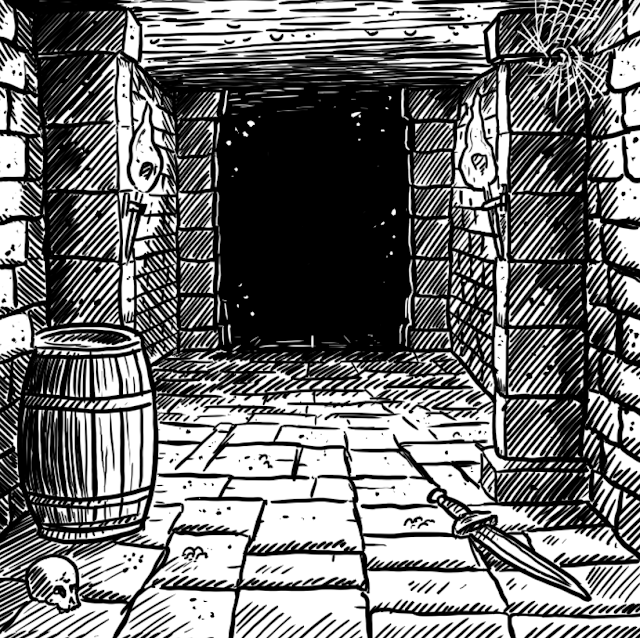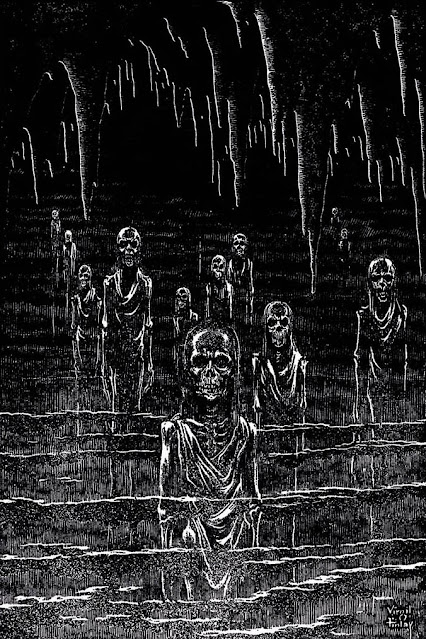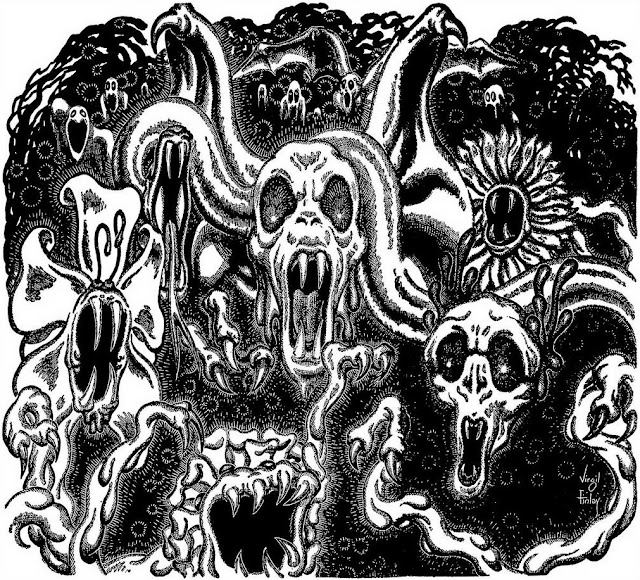 Traveller
Traveller is one of the hobby’s oldest Science Fiction roleplaying games and still its preeminent example outside of licensed titles such as
Star Wars and
Star Trek. It is the roleplaying of the far future, its setting of Charted Space, primarily in and around the feudal Third Imperium is placed thousands of years into the future. Since its first publication in 1977,
Traveller has been a roleplaying setting built around mercantile, exploratory, mercenary and military, and adventuring campaigns. Inspired by the Science Fiction of fifties and sixties, the rules in
Traveller can also be adapted to other Science Fiction settings, though it requires varying degree of effort depending upon the nature of the setting. The
Traveller: Explorer’s Edition is presented as introduction to the current edition of the roleplaying game, published by
Mongoose Publishing. It is designed for scenarios and campaigns that focus on exploration beyond the frontier and provides the tools for such a campaign, including rules for creating Player Characters, handling skills and challenges, combat, spaceship operation and combat, plus equipment, animals, and the creations of worlds to explore.
The
Traveller: Explorer’s Edition begins with a quick explanation of what it and roleplaying are before diving into game conventions—rolling the dice—and creating Player Characters. They are by default Human, and in the
Traveller: Explorer’s Edition, have had past careers as either Scouts or Scholars. Character creation primarily involves a player putting his character through a series of four-year terms during which the character will gain and improve skills, be promoted, experience events and mishaps, make connections with his fellow characters, and at the end of it, be older, wiser, and experienced. A Player Character will typically be aged anywhere between twenty-two and forty-two by the end of the process—and if older will have suffered the effects of aging.
The skill system for
Traveller is straightforward. To have his character undertake an action, a player rolls two six-sided dice and adds a Dice Modifier from the appropriate characteristic as well as a skill value. If the result is eight or more, the Player Character succeeds. The skill explanations are clear and easy to understand and include plenty of options as to how they might be used and how long a task might take. For example, for the Astrogation skill, “Plotting Course to a Target World Using a Gas Giant for a Gravity Slingshot: Difficult (10+) Astrogation check (1D x 10 minutes, EDU).” All of the skills are listed for the
Traveller roleplaying game, so there are skills mentioned here that the Player Characters cannot obtain during character creation. Combat uses the same basic mechanics and covers both ranged and mêlée combat, and allows for differences in technology and weapon traits. Damage is directly deducted from a Player Character’s characteristics—Endurance, followed by Strength and Dexterity. The rules also cover environmental dangers such as gravity and radiation, whilst encounters are with various animal types.
The equipment lists just about everything a mission will need when out exploring the galaxy. This includes arms and armour, augments, communications and computers, medical supplies, sensors, survival gear, and tools. The
Traveller: Explorer’s Edition also explains how spaceships are operated and space combat is conducted, although it should be noted that the rules for the latter cover use of skills that the Player Characters cannot obtain during character creation. For example, the Tactics (Naval) which helpful for initiative and then the Gunner skill for actually operating the ship’s weapons! So using the rules in the
Traveller: Explorer’s Edition means that any spaceship combat the Player Characters get involved in, they are going to be at a severe disadvantage from the start. Plus, there is only the one spaceship given in the
Traveller: Explorer’s Edition and that is the
Type-S Scout/Courier, which for an exploration campaign makes sense. However, there are rules for space combat, but no other ship stats or details in the rulebook. So, what exactly will the Player Characters be fighting in space combat in their
Type-S Scout/Courier? Other teams of explorers and scientists in their
Type-S Scout/Courier?
Lastly, the
Traveller: Explorer’s Edition includes rules for subsector and world creation. This cover world distribution followed by how to create a world profile, including Starport type, planet size, atmosphere, hydrographic percentage, population, government type, Law Level, and Tech Level. Much like creating a character this consists of rolling on tables and some of the ramifications of the numbers are detailed. These include Law Level and the likely types of goods banned and potential legal ramifications. In comparison to the earlier rules for character generation, the rules for world generation will provide for a wide range of possible outcomes and world types, but then these are tried and tested rules.
Physically, the
Traveller: Explorer’s Edition is an attractive product. It is well written; the artwork is decent and the layout is clean and tidy. It also includes an index.
There is one fundamental question which has to be asked about the
Traveller: Explorer’s Edition and that is, who is this book for? It is certainly not for the seasoned
Traveller player or Game Master, both of whom will already have access to the content in this rulebook. It is for the
Traveller fan and collector who will want to have it to add to the collection, but the rulebook does no more than add to that collection and again, that collection, that
Traveller fan and collector will already have access to the content in this rulebook in the collection. Is it for the player or Game Master new to roleplaying? Is it for the player or Game Master new to
Traveller? The answer to that question is yes, but very much not an unqualified ‘yes’. There can be no doubt that the
Traveller: Explorer’s Edition presents all of the rules necessary to run a game with an exploration theme, from creating scouts and scholars as Player Characters and equipping them and detailing the core rules to animal types, operating a spaceship in and out of combat, and creating worlds and sectors. However, go beyond that and an awful lot of problems begin to appear for the
Traveller: Explorer’s Edition.
The
Traveller: Explorer’s Edition is not written as an introduction to roleplaying. Its description of roleplaying is cursory at best and there is no example of what roleplaying is. Similarly, its introduction to
Traveller as a setting is equally as cursory. It acknowledges the existence of the Imperium—but no other polity—and explains that the
Traveller: Explorer’s Edition is set beyond the borders of the Imperium. So, in a sense, the
Traveller: Explorer’s Edition is set entirely away from the classic setting for
Traveller, and thus arguably not actually an introduction to
Traveller as a setting at all. Also similarly, the
Traveller: Explorer’s Edition ignores
Traveller as a roleplaying game. First in ignoring that the roleplaying game has any sense of history going back decades, and second—and more importantly, as an introduction to
Traveller, the
Traveller: Explorer’s Edition, by not having anything that asks, “What’s next?”. There is no page or text saying, “If you played and liked this game, here is what you should look at next.” This is a ridiculous omission for what is designed as an introductory product.
As an introduction to the rules and mechanics of
Traveller, the
Traveller: Explorer’s Edition does a better job. All are clearly and serviceably presented, but no more. This lack of a ‘more’ is where the
Traveller: Explorer’s Edition best showcases its inadequacies and omissions. For an introductory product, there is severe lack of examples in the
Traveller: Explorer’s Edition. What examples are amount to no more than a handful—an example or two of the core rules and an example world. There is no example Player Character, no example of space combat, no example subsector, no example of what a world actually looks like in
Traveller, and so on. So nothing that would help the prospective player or Game Master—whether new to roleplaying or
Traveller—with what these look like in the game.
Then there is the advice for the Game Master. Or rather, the complete absence of advice for the Game Master. To be clear, in a product that is intended to introduce a player to
Traveller and provide him with the tools necessary to create adventures or even an entire campaign as the Game Master, there is no advice whatsoever. So no advice on running a roleplaying game. No advice on running a campaign. No advice on running
Traveller. No advice on running an exploration-themed campaign, let alone a scenario. No discussion of what an exploration-themed scenario or campaign would be like. No discussion of what threats might be encountered. No advice on what mysteries might be found. No advice on what discoveries might be made. No advice on what alien life might be encountered. All of which is compounded by a lack of a scenario, a lack of a setting in terms of a world or subsector, or even a lack of scenario hooks or ideas or even encounter tables. If it were a case that the
Traveller: Explorer’s Edition was designed to introduce the rules to
Traveller and exactly that—no more, no less—then this would not be so much of an issue. Yet it clearly states that it is intended to do more than that, that it is intended to be used to run a campaign, a scenario, and so on. Then the rulebook completely ignores this whole aspect of its stated remit. Of course, this is a large subject to cover and the likelihood is that the
Traveller: Explorer’s Edition could not have covered it all, but none at all? It is as if there are twenty or extra pages that are actually missing from the rulebook. That fact that the
Traveller: Explorer’s Edition completely ignores the role of Game Master beggars belief.
Lastly, as an introduction to
Traveller, the
Traveller: Explorer’s Edition, there is no “What’s next?”. There is no page or text saying, “If you played and liked this game, here is what you should look at next.” This is a ridiculous omission for an introductory product.
Then there is the matter of the price. This varies wildly depending upon format and retailer. As a PDF, the
Traveller: Explorer’s Edition is less than a pound or a dollar, but in print, it costs £15 ($19.99) direct from the publisher, and a wallet gouging £25.99 ($24.99) in retail. The PDF than, can at best, be seen as a bargain—an attractive rules reference if you will. In print, the exact opposite is the case. The purchaser is simply not getting enough content for the money that he paid for it.
Ultimately, the
Traveller: Explorer’s Edition is an astounding showcase for a staggering lack of vision and imagination. Overpriced, over produced, overly utilitarian and technical, but underdeveloped, the
Traveller: Explorer’s Edition is a nothing more than a ‘cut & paste’ job that does not so much miss the possibilities of its title and theme and subject as ignore them all together.




















